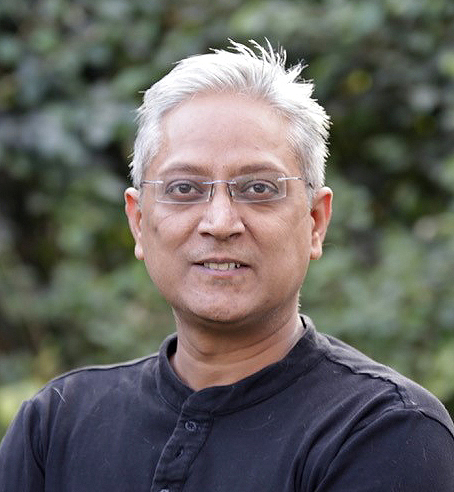
Interview with Alexander Seutter, CEO of CLIP Mediaservice, a media monitoring company in Austria
Nice to e-meet, Alexander. Can you tell us a bit about your background and current role?
When I founded the company 23 years ago, we were in the middle of a transition from analog to digital media monitoring. The biggest challenge back then, was to see in which direction media monitoring would evolve with all those rapid changes in the market. This challenge still exists today.
To get the most out of our clients’ daily media monitoring, we must be very sensitive to the market, observe it, listen to our customers, and develop new tools together with them. Therefore, I spend most of my time on strategic planning, market monitoring, and talking to customers and IT developers to implement new tools.
What makes CLIP different from others in your business area?
Customer service and customer satisfaction have always been top priorities at CLIP Mediaservice. Our customers thank us by remaining loyal to us to a degree that is far above the industry average. Secondly, our long-standing employees ensure a deep customer relationship because the know-how around our customer needs is retained, and they don’t have to deal with changing contact persons.
We support our employees in every respect and regularly receive awards for this, for example as a family-friendly company or Top Company on employer evaluation platforms. Of course, we are very proud of this. Internationally, we also hear again and again from other media monitoring companies with whom we have been working for many years that CLIP can always be relied upon. The prerequisite for this is a structured way of working and perfect communication with customers, employees, and suppliers.
What are the greatest challenges ahead for you and your team, when it comes to serving your customers and developing your offer?
In order not to waste unnecessary resources, it has become even more important to recognize which innovations are here to stay and which trends will disappear again. After all there are many, due to the significantly broader media landscape and the increasing speed in the communications industry.
Moreover, it is not easy to find relevant content since the media landscape is becoming ever more colorful and ever broad. Social media content is so extensive that it cannot be captured in its entirety. That is why we rely on suppliers who guarantee us the greatest possible coverage.
Finally, fake news is becoming a bigger issue. They distort the news landscape and are often very difficult to identify. Anyone can post content on the Internet without much effort, and the news spreads extremely fast. Often, you can't find out the source and can't verify its truthfulness. With analysis tools and artificial intelligence, however, this problem can be tackled quite well.
Do you consider these challenges to be global?
In Austria print media are still the most important medium and digitization is progressing only slowly. As a full-service provider, we have a decisive advantage here since we can monitor, prepare, and analyze the full scope of the media landscape.
How did you see the market for media monitoring and your customer needs change over the past years?
In the past, when I told acquaintances that I run a media monitoring company, they often used to ask me what it is. I would always answer that we get paid for reading newspapers and watching TV.
Today, that's far from being the case!
To understand the modern media landscape today, one must collect numerous reports and select, analyze, and categorize them. The result must then also be able to be interpreted correctly and presented on a dashboard to be able to keep an eye on the market and competitors. As a professional media monitoring company, we have the resources and know-how to do this.
What is the first step to help your clients improve their media monitoring?
Our system has a very flexible structure that we are constantly adapting and developing. We can therefore respond to almost any request. Our customers’ internal systems are usually equipped to create and distribute press reviews and analyses, but not to implement new automated monitoring and analysis tools. We help them implement new techniques and create individual solutions for them, so that the existing systems can be adapted to the new requirements. In special cases we develop customized tools to facilitate their daily work and to relieve them of personnel.
What kind of data or media not currently used can be interesting in the future?
There are more and more metrics available. To get the data that is relevant to our customers, you have to filter more and more data. On the other hand, LinkedIn is not yet covered, for example. Media and platforms that are currently being tapped by comms, such as WhatsApp or Discord, will be covered in the future to flow into analyses.
Looking at the media monitoring industry in 5 years, what do you think are the greatest challenges and opportunities ahead?
Clearly: artificial intelligence and machine learning! Many things that require skilled personnel in media monitoring today can be replaced by automation in the future. The advent of Big Data combined with machine learning has paved a path that will lead to operational and business changes, enabling greater accuracy in decision making and better performance.
In practice, this means for our customers: higher evaluation speed involving larger amounts of data. As a result, more accurate analyses can be produced and relationships between different data sets can be better identified. This will contribute to optimized PR and media work for our clients.
The market was struck by the pandemic, now economic instability. How can companies use media monitoring to stay resilient in turbulent times?
Especially in times of crisis, media monitoring has become an essential tool for our customers to stay strong. It can be used to provide an overview of what’s happening in the industry, to read off future trends and moves from competitors, and to better manage one's own reputation.
Regarding covid and war, the challenge for us was to intelligently select indirectly relevant articles that nevertheless have a decisive influence on the business model of our customers and thus create real added value. This could only be done to a high standard of quality with human proofreading, like before.
By Anna Roos van Wijngaarden


